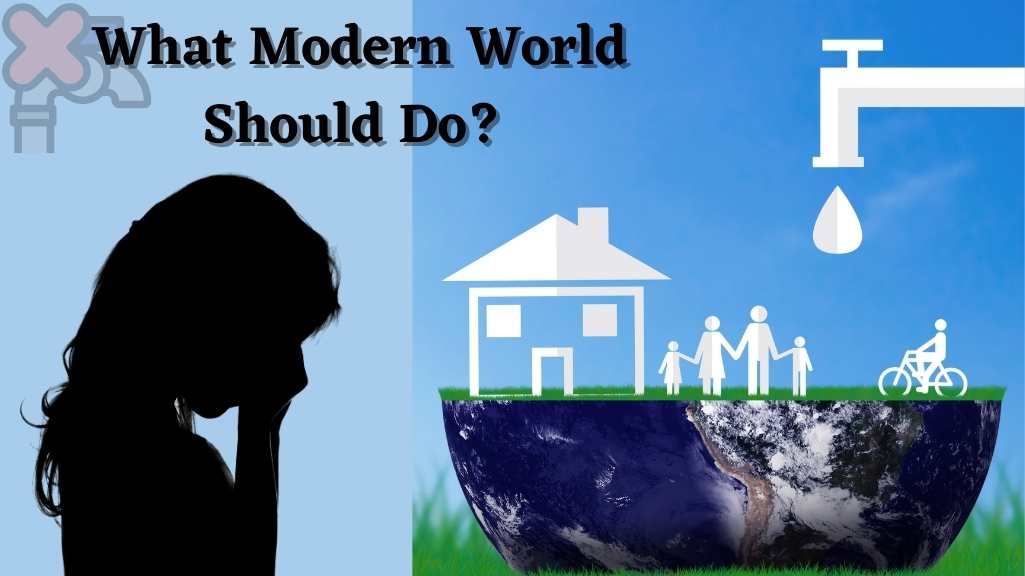The Water Crisis Facing the Modern World
Devin Barton
. 6 min read
The water crisis refers to the global shortage of clean and accessible water for human consumption, agriculture and industry. This crisis is caused by a combination of factors including population growth, urbanization, climate change, pollution, and over-extraction of water resources. The crisis affects both developed and developing countries, and disproportionately impacts low-income communities and marginalized populations. The impacts of the water crisis can be severe, including increased health risks, economic losses, and social and political instability. It is crucial that immediate and long-term solutions are implemented to address this crisis, including increasing access to clean water, improving water management, and investing in new technologies.

Climate Change and Human Factors Deny Children Safe Water and Sanitation in Developing Countries
Each year, diarrheal diseases claim the lives of two million people, the vast majority of whom are children. It is not unusual for there to be a lack of available water even in nations that have adequate water resources. Even though this may be the result of a number of factors, such as a collapsed infrastructure and distribution system, contamination, conflict, or poor management of water resources, it is abundantly clear that climate change, in addition to human factors, is increasingly denying children their right to safe water and sanitation. This is especially true in developing countries.
Water Scarcity Disproportionately Affects Women and Children: Impact on Education and Safety
Women and children suffer disproportionately from the effects of water scarcity because they are frequently the ones tasked with gathering the scarce resource. When water is located at a greater distance, it takes longer to collect, which frequently results in less time spent in class. A lack of water in schools has a negative impact on student enrollment, attendance, and performance, and this is especially true for young women. Carrying water over long distances is not only a significant physical burden, but it also puts children at risk of being exploited and puts them in danger.
The current state of the world's Water Crisis in Facts
During the 1700s and 1800s, industrialization in England leads to an increase in urbanization, which highlights the necessity of having access to clean water supplies and proper sanitation.
1800s: The first mention of water scarcity is found in historical records. During an outbreak of cholera in London in 1854, Dr. John Snow makes the discovery that there is a connection between water and the spread of the disease.
1900s: Since 1900, more than 11 billion people have died as a direct result of drought, and more than one billion people have been adversely affected by drought. The United Nations General Assembly proclaimed March 22 as World Water Day in the year 1993.
In 2000: the member states of the United Nations established what are known as the Millennium Development Goals (MDGs) for the progress of development. One of these goals is to halve the number of people who do not have sustainable access to clean drinking water by the year 2015.
In 2003: UN-Water was established as a platform for coordinating efforts related to issues of sanitation and access to fresh water.
In 2005: 35 percent of the world's population was affected by chronic water shortages, which is an increase from the nine percent who were affected in 1960.
The Primary Factors Contributing to Water Scarcity
Excessive use of water: In today's world, excessive use of water is a growing problem, as evidenced by the fact that people are using more water than is required.
Water pollution: The growing problem of water pollution in today's world is a major source of concern because it is one of the primary contributors to the shortage of fresh water. Pollutants of any kind, including oil, dead animals, chemical waste, and human waste, can contaminate water supplies.
Conflict: Sometimes the presence of conflict between the land causes a scarcity of water, which can hinder local infrastructure and potentially cause disruptions in the water supply for a large number of people.
Drought: Droughts are typical in regions that are characterized by a hot and dry climate. Because they are located in regions that do not receive an adequate amount of rainfall, which makes it difficult for life to be sustained in those areas.
Water scarcity as a result of global warming: One of the primary causes of water scarcity is global warming, which is a condition in which the average air temperature rises. As a result, water from rivers and lakes evaporates at a faster rate, which can potentially result in the drying up of water bodies.
Obtaining Access to the Government: In some nations, particularly those ruled by dictatorships, the consumption of water may be subject to stringent controls enforced by those in power. This may result in a water shortage for people living in those regions of the world.
Illegal dumping: Another significant factor contributing to water shortages is the practice of illegal dumping. It is common practice for industries to dispose of their industrial waste in rivers and lakes in the surrounding area because doing so is a simple and inexpensive way to get rid of this waste.
The Contamination of Groundwater: Due to the fact that harmful substances are washed through polluted soil and into groundwater whenever it rains, groundwater pollution can be caused by illegal dumping as well as soil pollution.
Addressing Water Scarcity: Short-term Solutions, Quality Preservation, Education and Technological Advancements
Make Clean, Safe water available to those who have the greatest need for it:
The transportation of water via truck is one of the most expedient short-term solutions to a shortage. This is true whether the water is being transported to a refugee camp while the infrastructure in the surrounding area is being improved or whether it is being transported to communities that are experiencing a drought. This is a costly solution that is not a long-term solution to the problem, but it is a stopgap that has the potential to save lives.
Preserve or Enhance the quality of the water that is readily available in a region:
In many cases, the presence of a natural spring in a community represents the ideal circumstance. In the event that this is the case, we collaborate with the local community to preserve the water source so that it can continue to serve as a source of supply. The land above and around the water source can be kept free from human and animal interference as well as contamination by erecting protective structures on the land.
Raise People's Awareness of the water scarcity issue and educate them:
It is of the utmost importance to raise awareness about the crisis and encourage people, businesses, and government agencies to take action. This includes educating people about the extent and impact of water scarcity, as well as teaching them how to conserve water.
Invest in cutting-edge technological advancements:
There are a number of promising new technologies that can help address the problem of water scarcity. Some examples of these technologies include rainwater harvesting systems, wastewater recycling, energy-efficient desalination plants, solar and UV water filtration, and nanofiltration.
Encourage People to reduce their water consumption
Some general pointers that we can all put into practice are as follows:
- When washing dishes, fill the sink with water rather than letting the water run continuously.
- While you are waiting for the water in the shower to reach the desired temperature, catch the water in a bucket.
- When brushing your teeth, make sure the water doesn't run continuously.
- Put in plumbing and appliances that are more water-efficient.
- Only flush the toilets when it's absolutely necessary.
- Fix any dripping that may be occurring in the sinks, tubs, or toilets.
- Showerheads with a high flow rate should be switched out for ones with a lower flow rate.
- Instead of using a water hose to clean the sidewalks, you should use a broom.
More Stories from
Electricity: The Lifeblood of Modern Society
This article provides a concise yet comprehensive overview of electricity, exploring its generation, transmission, and applications in our daily lives.
Is There Evidence of Extraterrestrial Life? Exploring the Drake Equation and Controversial Discoveries
This article discusses the question of whether or not there is extraterrestrial life, and explores some of the evidence and theories surrounding the topic.
Understanding AC and DC: The Fundamentals of Electric Power
This article provides a concise overview of Alternating Current (AC) and Direct Current (DC), the two fundamental types of electrical power.
The Mysteries of the Brain: Recent Discoveries in Neuroscience
From the brain's remarkable adaptability to the profound link between the gut and brain, explore the cutting-edge findings shaping our understanding of cognition and behavior.
Defense Advanced Research Projects Agency (DARPA): Pioneering Innovation in Defense Technology
This article provides a concise overview of the Defense Advanced Research Projects Agency (DARPA), its mission, and its key contributions to revolutionizing defense technology.






.png?width=40&aspect_ratio=1:1)

.png?width=40&aspect_ratio=1:1)




